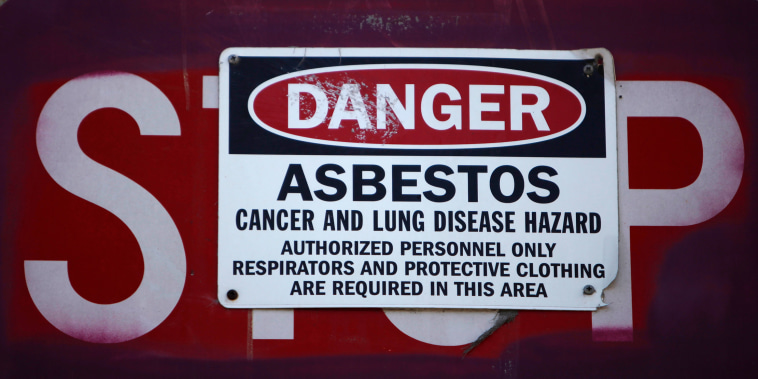The Environmental Protection Agency (EPA) has recently taken a bold step to ban asbestos, a hazardous material and known carcinogen, that was still in use several decades after a partial prohibition was implemented.
Asbestos, most commonly associated with serious health conditions such as mesothelioma and asbestosis, has had prolonged usage despite its recognized dangers. Derived primarily from mineral deposits, asbestos was a popular choice in multiple manufacturing sectors due to its significant heat-resistance, sound-absorption and insulation properties. However, the negligibly small asbestos fibers could easily be inhaled or ingested by personnel, subsequently embedded in the body and inducing fatal diseases.
The Workplace Hazardous Materials Information System (WHMIS) classifies asbestos as a Class D, Division 1, Subdivision A material; meaning it has immediate and serious toxic effects. Asbestos exposure has been prognosticated to causes numerous health hazards, most notably cancer and lung-related diseases. Hence, asbestos regulation and end of its use became a paramount concern for public health authorities, workers’ safety organizations and environmental groups.
The partial ban on asbestos dates back to the late 1980s when the EPA banned product-specific use of asbestos. However, despite the ban, certain exceptions allowed for its continued use. For example, certain asbestos-containing products such as clothing, tiles and corrugated sheeting were still allowed in the market.
This loop-hole has now been closed, as the EPA has implemented what is known as the Significant New Use Rule (SNUR), under the revised Toxic Substances Control Act (TSCA). The SNUR, which rolled out in 2019, is meant to prevent the reintroduction of asbestos manufacturing, importation, and processing for a list of discontinued uses, unless a specialized pre-approval is given by the EPA. This rule stands as a testament to the government’s commitment to public health and promoting safer alternatives to asbestos.
The asbestos ban warrants manufacturers to report and seek approval from the EPA before resuming the usage, production, distribution, or importation of asbestos-containing products. The snub to asbestos in this fashion is to maximize public transparency about its uses and minimizing public exposure, ensuring increased protection to both human health and the environment.
Environmentally conscious groups, public health advocates, and workers’ unions have widely lauded the decision, noting the importance of fully implementing the law and enforcing it cross-nationally is vital. However, there is also an intent call for a comprehensive ban, demanding an end to all asbestos use that could hazardously pollute the air or endanger human health.
The EPA’s decision to ban asbestos has notable implications for public health, environment, and economy. Small asbestos fibers airborne can travel miles, polluting air and water. Halting its use will comply with global green commitments and ensure safer environments. Meanwhile, this will also spur industries to innovate and adopt environmentally-friendly alternatives for insulation and fireproofing.
The verdict also underlines economic transition towards safer materials. Firms have started seeking green alternatives, pushing for a paradigm shift in various industries such as construction, automotive, and textiles. The constraints associated with asbestos have further fuelled R&D drives, spawning a slew of novel products with less environmental impact, more sustainability, and safer labor conditions.
The EPA’s move has been critically significant not just for public health and ecological conservation, but also setting the pace for policy development in other nations where asbestos use is still permitted. Through this initiative, the United States is setting a precedent for other countries to follow, fostering a global effort to eradicate this deadly carcinogen.
In the journey to a healthier, cleaner and safer society, the full ban of asbestos is indeed a pivotal point that underscores the importance of putting the welfare of the environment and public at the forefront. As we relish this remarkable stride, continued efforts are required to ensure complete eradication of asbestos use, safeguarding our society from its harmful effects.




